Top Photo: Common snapping turtle contemplates its next move.
The snapping turtle pictured here was heading towards our wetlands. It may be a new arrival, having come up the creek which lies a dozen or so meters behind it. The creek is where our wetland drains. There’s a substantial drop where a large pipe delivers our wetland’s overflow into the creek. The drop keeps creatures like this snapping turtle from continuing their journeys via a direct route to our wetlands through the pipe. They’re diverted to an overland hike instead.
Or, the snapper may have been seeking a nest site, completed its business and was on her way back to the pond. Though, I’m not sure this turtle was out laying eggs, most turtles who’ve been digging nests in clay get quite muddy in the process. This turtle looks very clean.
Either way, she encountered people as she crossed the path and felt the need to pause. It didn’t keep her long though. A few minutes to assess the situation and she was off again, back to her original plan, make it to the wetlands.
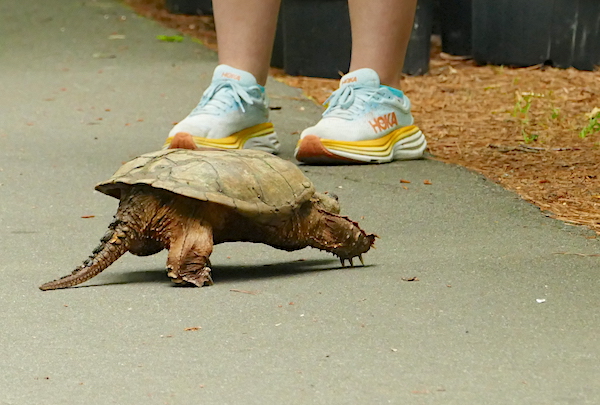
Northern cardinals are perhaps the most commonly observed songbirds on campus. And, their nests seem to be among the easiest to find, making them vulnerable to predators. Last year there were four cardinal nests easily visible to passersby on the Dinosaur Trail alone. Each failed due to apparent predation.
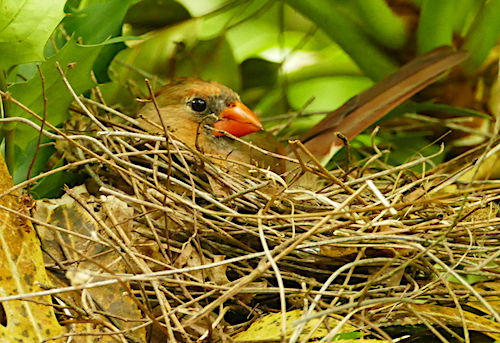
So far this year one nest on the Dino Trail that I’m aware of has succumbed to predators, probably crows.
Late in the morning one day last week, a cardinal sat confidently on her nest in a fatsia Japonica alongside the Dino Trail (above). After lunch, the bird, and most of the nest, was gone. A single egg lay in the leaf liter below the nest.

Red milkweed beetles are being seen on the milkweed in the garden above the Butterfly House. They’re long horned beetles.
The adults feed on the leaves of milkweed. They first cut into the veins of the milkweed’s leaves to reduce the plant’s milky toxic flow, feeding on the distal portion of the leaf, beyond the cut. Though, I’m sure they’re still quite toxic themselves, judging by their bright red color and habit of feeding out in the open, daring any bird or other potential predator to take a bite.
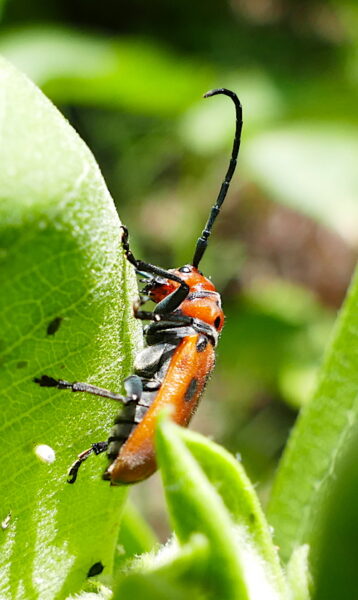
Not on milkweed, but feeding and mating on the leaves and stems of false sunflower (Heliopsis helianthoides), is a group of insects known as false milkweed bugs (Lygaeus turcicus). You can see them across the path from The Sound Garden in Gateway Park.

There are a handful of orange and black or red and black plant bugs which resemble the false milkweed bug, including the large milkweed bug and small milkweed bug among others. But this one, the false milkweed bug, has a black double, or stacked, “V” on its back. The other look-alike bugs are marked differently. And, as alluded to, you probably won’t see false milkweed bugs on milkweed.
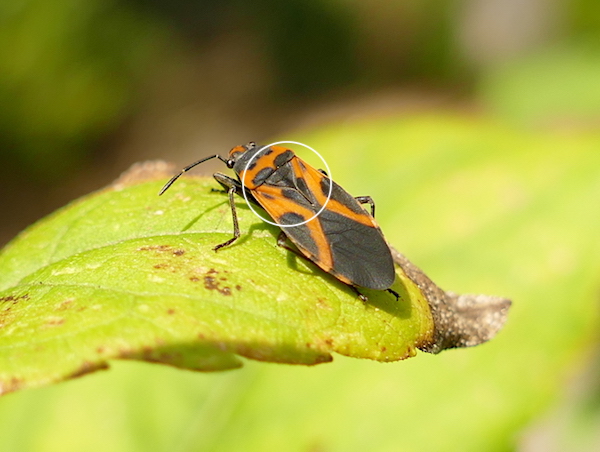
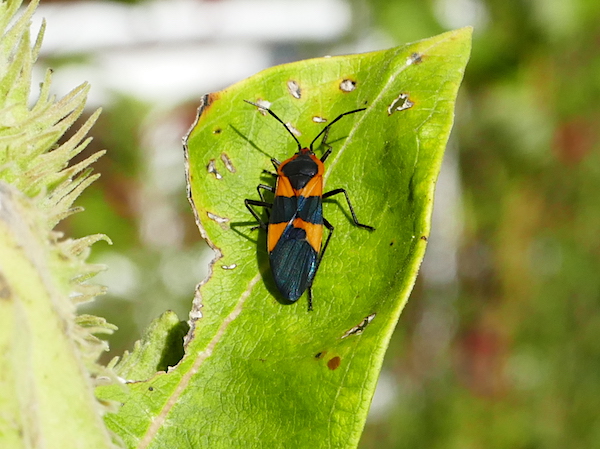
There are about a dozen Lopidea plant bugs in North Carolina. Each has it own plant on which it feeds. These too may be mistaken for one of the other red or orange and black plant bugs.
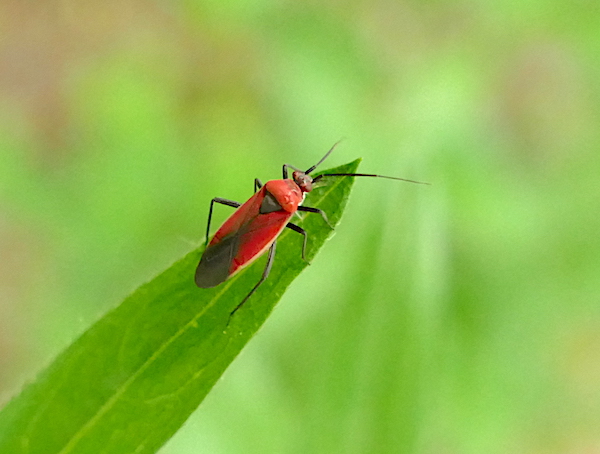
The only water snake species known to be in our wetland is northern water snake. The one shown here looks to be a female, about average length (just under 3 feet), and coming out to sun on a planter next to our floating walkway in Explore the Wild.
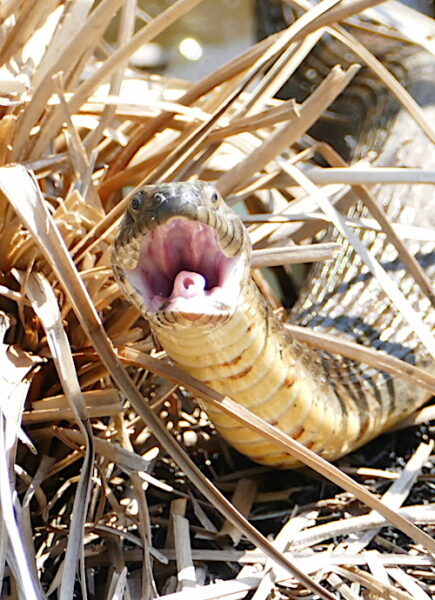
And finally, if you’re out at the Red Wolf Overlook in Explore the Wild early on a cool morning you may get a glimpse of Oak and Niko, our two red wolves, chasing each other around their enclosure. It’s very entertaining.
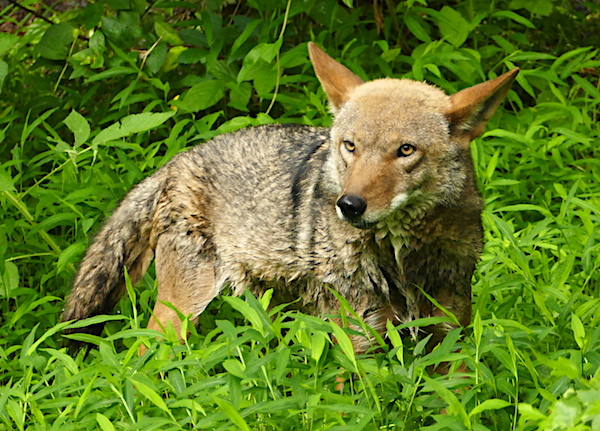
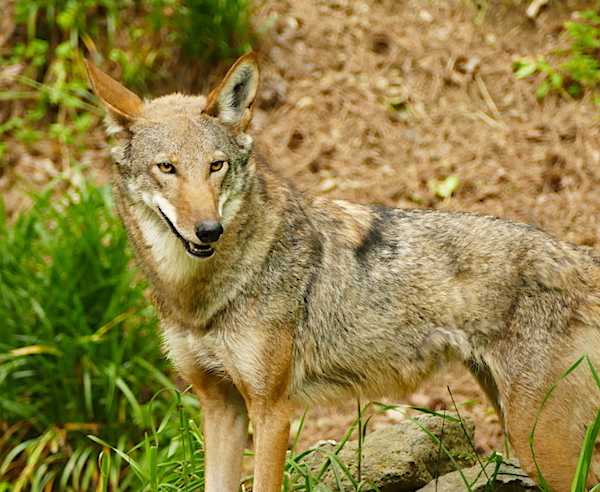
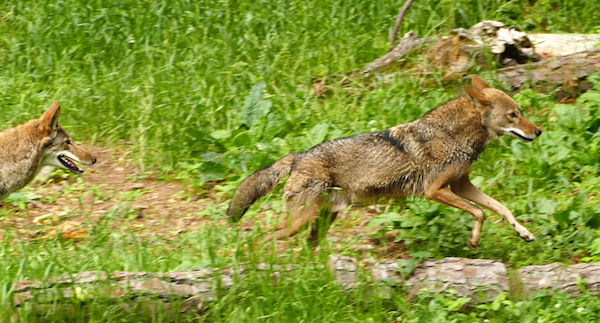
Enjoy!